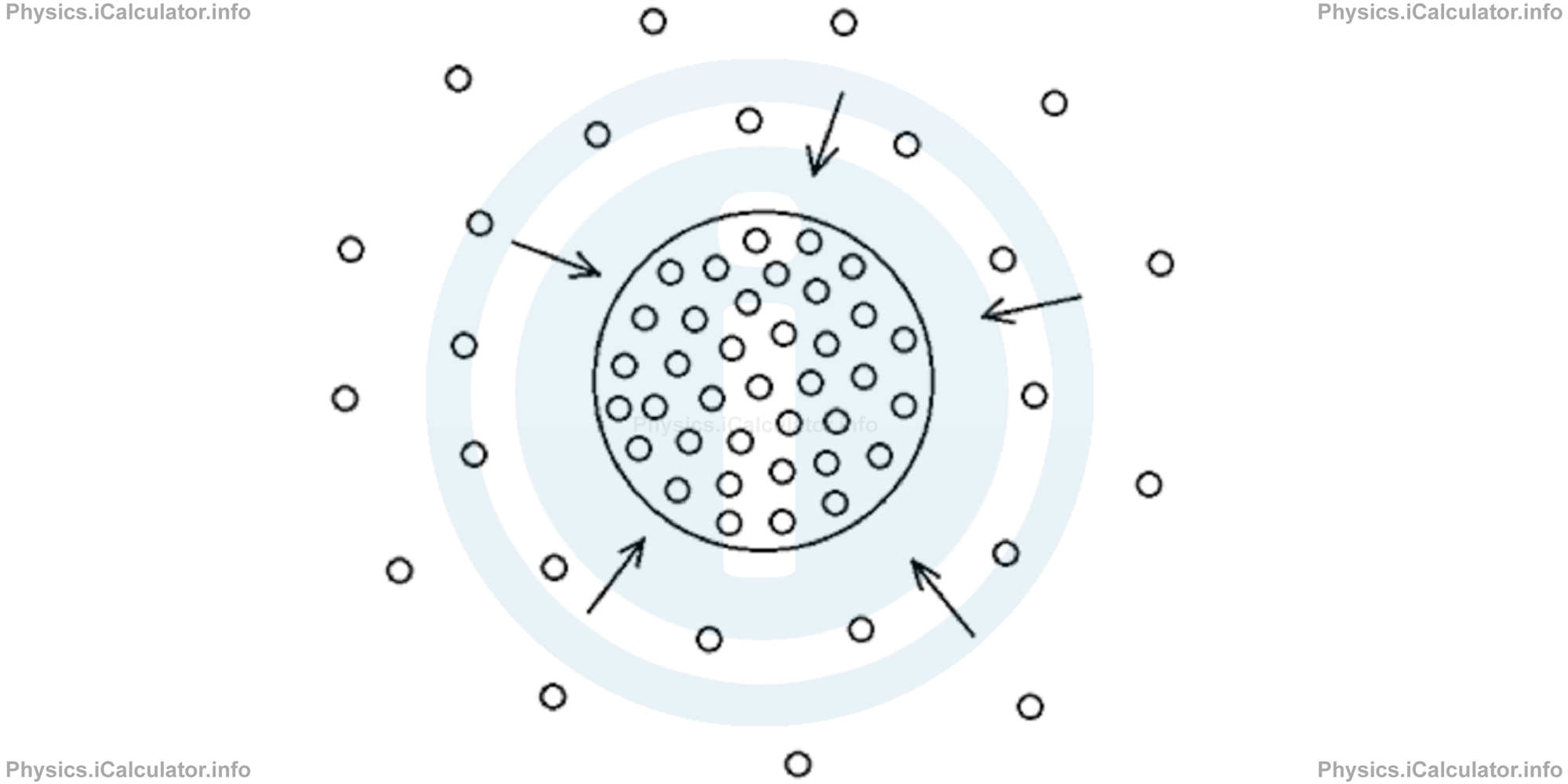Menu
Physics Lesson 22.12.2 - Formation of Galaxies
Please provide a rating, it takes seconds and helps us to keep this resource free for all to use
Welcome to our Physics lesson on Formation of Galaxies, this is the second lesson of our suite of physics lessons covering the topic of Formation of Galaxies and Solar System. Actual Problems, you can find links to the other lessons within this tutorial and access additional physics learning resources below this lesson.
Formation of Galaxies
There are many models that try to explain the process of galaxies formation but all of them have one thing in common: they rely on the process of increase in matter fluctuation, we introduced this concept in the previous paragraph (without referring to the name of method). Let's explain this process in more detail.
Consider a region of space containing small deformations of matter produced occasionally because of matter fluctuations. In other words, in certain moments there are more particles in a region of space than in another, resulting in regions with higher density than the surroundings. Since gravitational force in these denser regions is greater, they start collecting matter from the surrounding space. As a result, these regions become denser and denser with time at the expense of the surroundings, which on the other hand becomes less and less dense, losing matter continuously until only vacuum is left. Look at the figure.

Supporters of these theoretical models however, face two main challenges when trying to explain them. The first issue consists on the fact that not every fluctuation of density brings the increase in the amount of matter gathered around it. Some fluctuations disappear after being formed in a region of space. This occurs because of thermal movement which tends to oppose the pulling effect of gravitational force. In order to be able to form new galaxies, the increasing fluctuations must contain enough matter, which based on today's observations must have a mass equal to 1011 solar masses, a value that represents the mass of an average galaxy. The second challenge for theoretical models to overcome consists on finding a reliable version of explanation regarding greater structures such as groups and super-groups of galaxies.
One of the most reliable fluctuation-based models of galaxies formation is that of gradual growth of fluctuations. According to this model, the expansion of Universe favours certain fluctuations while eliminating the others.
As for the gas clouds the absorb matter from the surrounding space and become heavier due to gravitational force, it is obvious that there are two variables to be considered when dealing with their growth: one is the Universe expansion that brings a decrease in matter density and the other is the gravitational attraction that increases the density. After some time, these opposing effects balance each other. As a result, the new structures created (the gas cloud and its components) detach from the rest of cosmic gas. After this critical moment, the galactic cloud collapses as gravitational force prevails over the expansive effect because the expansion process has already stopped.
The collapse of gas cloud (cosmic dust) is very intense; the resulting high speeds produce a circular motion around the centre of this cloud. Hence, the cloud takes an elliptical shape while rotating around itself, which eventually takes a disc shape except the central region, similar to the shape of Milky Way galaxy we have seen in tutorial 22.6. Moreover, a number of smaller fragmentations containing dense matter occur inside this structure that eventually form the stars. We will discuss this process in more detail when explaining the formation of the solar system.
The above model explains how spiral galaxies were formed and also how the revolution of stars around the centre of the corresponding galaxy occur.
You have reached the end of Physics lesson 22.12.2 Formation of Galaxies. There are 7 lessons in this physics tutorial covering Formation of Galaxies and Solar System. Actual Problems, you can access all the lessons from this tutorial below.
More Formation of Galaxies and Solar System. Actual Problems Lessons and Learning Resources
Whats next?
Enjoy the "Formation of Galaxies" physics lesson? People who liked the "Formation of Galaxies and Solar System. Actual Problems lesson found the following resources useful:
- Galaxy Feedback. Helps other - Leave a rating for this galaxy (see below)
- Cosmology Physics tutorial: Formation of Galaxies and Solar System. Actual Problems. Read the Formation of Galaxies and Solar System. Actual Problems physics tutorial and build your physics knowledge of Cosmology
- Cosmology Revision Notes: Formation of Galaxies and Solar System. Actual Problems. Print the notes so you can revise the key points covered in the physics tutorial for Formation of Galaxies and Solar System. Actual Problems
- Cosmology Practice Questions: Formation of Galaxies and Solar System. Actual Problems. Test and improve your knowledge of Formation of Galaxies and Solar System. Actual Problems with example questins and answers
- Check your calculations for Cosmology questions with our excellent Cosmology calculators which contain full equations and calculations clearly displayed line by line. See the Cosmology Calculators by iCalculator™ below.
- Continuing learning cosmology - read our next physics tutorial: Earth and Other Celestial Bodies
Help others Learning Physics just like you
Please provide a rating, it takes seconds and helps us to keep this resource free for all to use
We hope you found this Physics lesson "Formation of Galaxies and Solar System. Actual Problems" useful. If you did it would be great if you could spare the time to rate this physics lesson (simply click on the number of stars that match your assessment of this physics learning aide) and/or share on social media, this helps us identify popular tutorials and calculators and expand our free learning resources to support our users around the world have free access to expand their knowledge of physics and other disciplines.